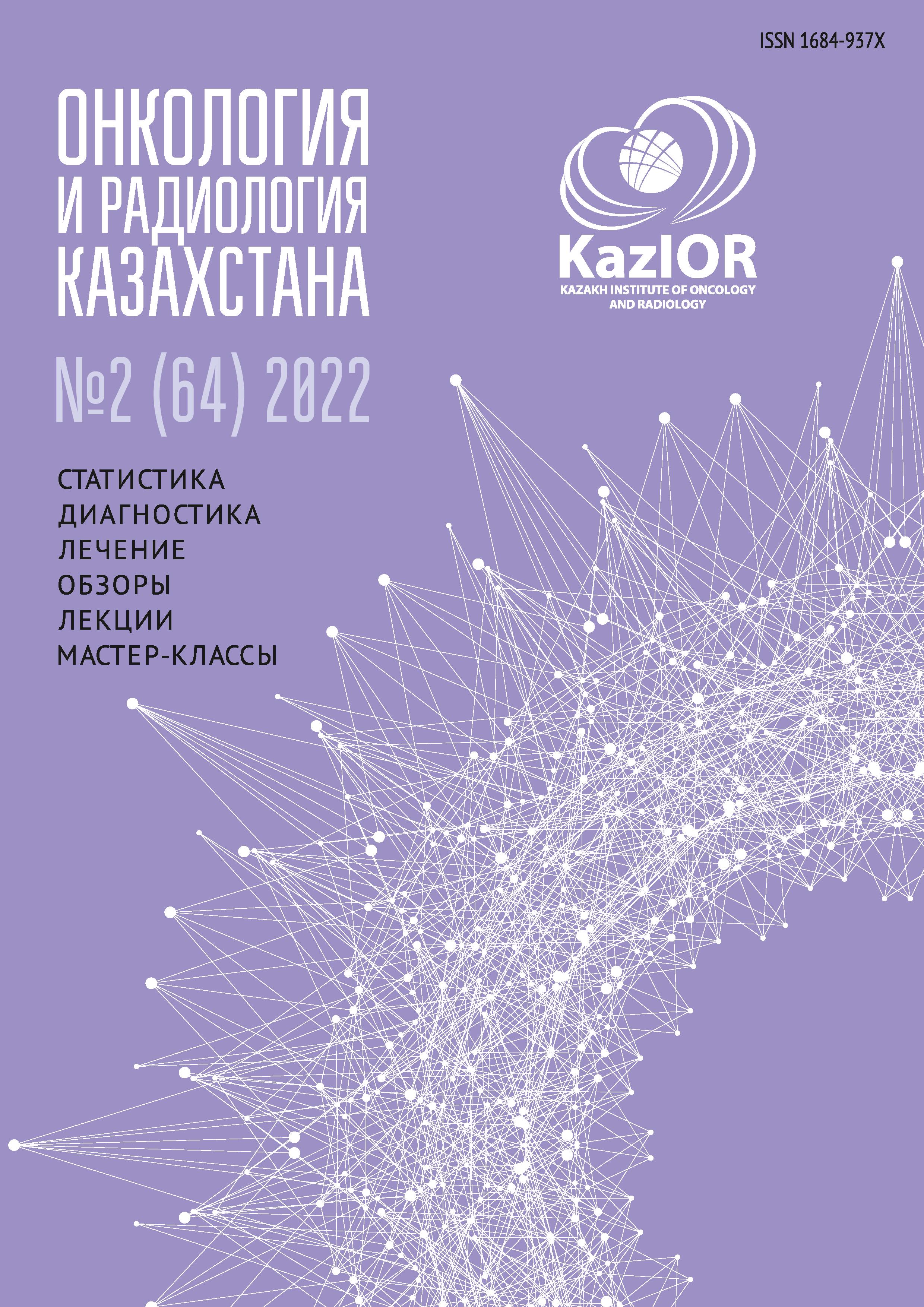An analysis of an integrated approach to carotid body tumor surgical treatment at the national research oncology center (Nur-Sultan, Kazakhstan)
Keywords:
carotid body tumor, chemodectoma, vascular neoplasm, carotid basin, carotid reconstruction, endovascular embolizationAbstract
Relevance: Carotid body tumors (CBT) account for 0.01% of all head and neck tumors. 5-15% of CBTs are malignant. The expansive growth of this tumor and its tight attachment to the carotid arteries pose a risk of damage to the main blood vessels and cranial nerves during surgery that can lead to life-threatening bleeding. Today, preoperative embolization of CBT feeding vessels (PECBT) is used to minimize blood loss during CBT radical excision.
The study aimed to evaluate the results of preoperative preparation of patients with CBT by PECBT; justification of a CBT incidence multicenter study to determine CBT's current status in Kazakhstan.
Methods: An anamnesis was collected from all patients, and instrumental diagnostic studies (ultrasound, CTA) were performed. We used the Shamblin (1971) classification of CBT modified by Luna-Ortiz et al. (2006). PECBT was performed to prepare patients for open surgery. CBT excision tactics were selected depending on the classification of the CBT according to Shamblin.
Results: Out of 9 patients with CBT, seven patients complained mainly of a neck tumor; the others mentioned pain and dysphagia. Four patients had a left-side CBT, and the others had a right-side. One tumor was Shamblin type I, five were Shamblin type II, and three were Shamblin type III. Eight patients underwent PECBT, and one was operated on without PECBT. In 8 cases, CBT was surgically incised; one patient did not show up for the second stage of treatment. Arterial reconstruction was required in two cases. An average size tumor was 27.4 cm3. The CBT excision was controlled without significant bleeding thanks to the presence of an embolic agent. Blood loss averaged 750 ml; reinfusion – 243.3 ml.
Conclusion: The CBT incidence in Kazakhstan has not been studied yet, so a multicenter study is required. Early ultrasound and CT diagnostics support providing patients with up-to-date, efficient surgical treatment. PECBT provides favorable conditions for the tumor resection without hemodynamically significant blood loss.

